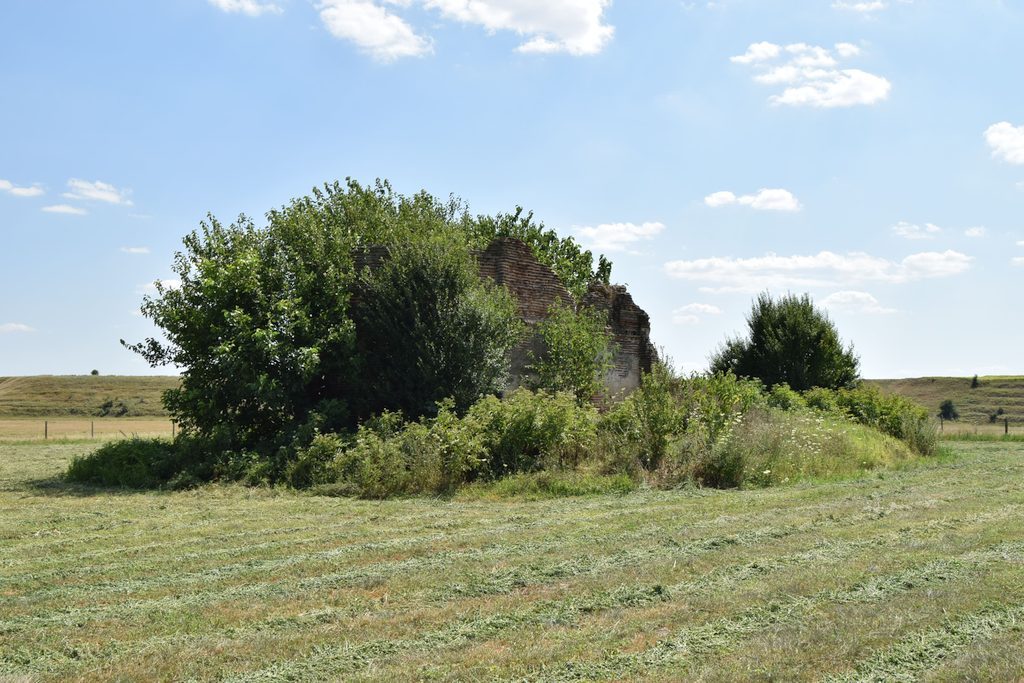

Ruined church on the outskirts of Baldovineşti village was dated in the absence of any document or inscriptions by archaeologists Voica Puşcaşu Maria and Ion Dumitrescu after stylistic criteria, during the reign of Matei Basarab. Previously to their report the church was mentioned in 1898 in the Great Geographical Dictionary of Romania, “the former monastery in the old days”, being “in the most complete ruin.” The plan of the monastery is rectangular, with a pentagonal apse a bit unhooked.
In front of the narthex stands a porch of masonry, whose primers are still visible in the preserved wall of the church, along with its arches begginings and with the two eastern pendants.
These elements support the church dating of in the the second half of the eighteenth century, or even to its end. The narthex was covered with a spherical calotte, the only fragmentary preserved vault, supported on wide arches, finished with a console. It is surmounted by a bell-tower of an octagonal section, with eight windows, resting on a very high square base decorated with a cornice of the same petty cogs retrieve also at the double archivolt which marks the octagon’s windows with two successive withdrawals and semicircular openings. The nave was covered with a spherical dome on pendants, resting on four large arches that continued towards west in shape of a corner pilasters and towards east they ended inside the console. The altar had the usual semi-calotte. As unique exterior set the body of the church was surrounded at about a quarter of its height in the upper zone,by a wide belt, consisting of a huge specially profiled solid brick torus, flanked by two rows of large teeth of the saw. The socket is hidden by the ground that covers the old level of the limestone and the cornice has disappeared along with the collapse of vaults and the upper parts of the walls.
Baldovineşti is a village in the commune Ciolăneşti in Muntenia region, Romania.
Located in the north section of the county, in Câmpia Găvanu Burdea.
In the 2002 census had a population of 552 inhabitants. On the outskirts of the village are the ruins of the church of the former monastery Baldovineşti (sec. XVII). These included in the list of historical monuments. The name comes from the old patronymic Baldovin (which exists in other languages under the forms Baldovino, Baudouin, Baldwin), who itself comes from the god of beauty in North mythology, namely Baldur.
